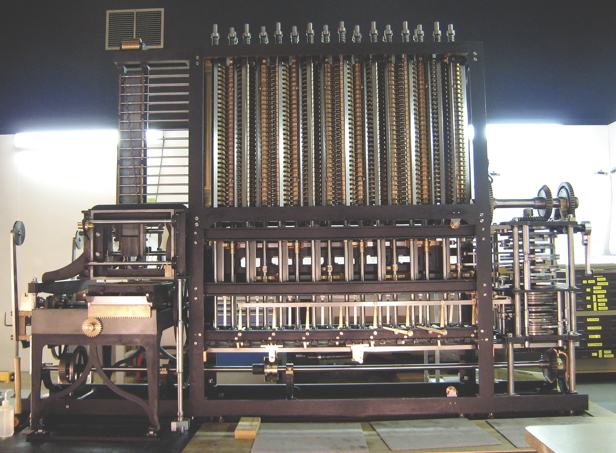The Difference Engine was the first automatic, mechanical calculator designed by British mathematician Charles Babbage, who proposed its construction in 1822 to the Royal Astronomical Society. He suggested the machine would employ the decimal number system and would be powered by turning a handle, as a method to calculate mathematical tables mechanically, therefore removing the high rate of human error.
At first Babbage received financial backing from the British Government, but this was later pulled when no apparent progress had been made on constructing the device. The inventor went on to design a more general analytical engine and then later in 1847 an improved engine design – the Difference Engine No. 2.
From 1989 to 1991, using Babbage’s original plans of this second version, the London Science Museum constructed Babbage’s envisaged machine. Faithful to the original designs the machine consists of over 8,000 parts, weighs five tons and measures 3.4 metres (11 feet) in length. In 2000 the printer which he plotted to accompany the engine was added and together performed as the inventor had intended over a century before. The completion of the machine ended a long-standing debate as to whether Babbage’s designs would’ve worked.

